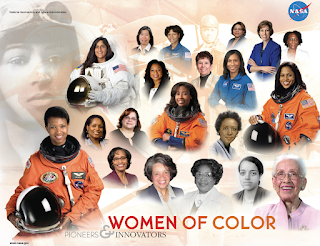Brief Summary: Since the first half of the twentieth century, an increasing number of astronomers have pursued parallel careers as both academics and activists. Besides publishing peer-reviewed papers, they have promoted a great variety of underrepresented groups within their discipline. Through conferences, newsletters and social media, they have sought to advance the interests of women, members of racial and ethnic minorities, LGBTQ+, and disabled people. While these activists have differed in the identities they focus on, they have come to share a conviction that diversity and inclusion are crucial for scientific excellence as well as social justice. This book covers the biographies and institutional contexts of key agents in the diversification of modern astronomy. Central to discussions about who has privileged access to the tools of astronomical inquiry, including powerful telescopes and extensive databases, they have also significantly shaped views of our universe.
What was your motivation for writing this book?
I wanted to write a history of the broader movement for diversity, equity, and inclusion in astronomy. We have some excellent accounts of individual astronomers who advanced women and other marginalized groups in the discipline, including Vera Rubin, the subject of an outstanding biography by Jacqueline Mitton and Simon Mitton. However, we do not know as much about how activists organized and networked. In addition to the lives of specific astrophysicists, I wanted to cover the history of groups, committees and conferences. Since the 1990s, much of this networking has taken place in online spaces, facilitated by listservs, blogs and social media. Yet, many of these digital sources are at risk of disappearing or becoming inaccessible over time. Who knows about the future of X (formerly Twitter) as a platform for activism, for example? I wanted to preserve key developments and debates, before valuable information gets lost.
Why did you make the choices you did? For example, how did you decide whom to interview or whose story to record and tell?
I was especially interested in interviewing astronomers with a long history and memory of diversity activism and service. Examples include Meg Urry of Yale University and Gibor Basri of the University of California, Berkeley. People like them could look back over decades and trace important changes in the profession. I was also trying to complement the older with younger voices, like that of Chanda Prescod-Weinstein, in order to uncover similarities and differences among different generations of activists. Some of my interviewees emerged organically, through recommendations by others. For instance, Prescod-Weinstein suggested that I contact Ashley Walker and Charee Peters. On the other hand, some astrophysicists on my list declined or never responded to my requests for interviews for various reasons.
Tell us about the geographical distribution of the people and topics you write about.
To a certain extent, the geographical distribution of my book’s protagonists reflects that of astrophysicists in general. You will find many people who have worked in the United States, the United Kingdom, the Netherlands, Germany, South Africa and Australia. These countries have all had high numbers of astronomers per capita (that is, relative to the size of their populations). However, I have been limited in the languages I and my research assistants can speak. I wish I could have interviewed more astronomers in Japan or Korea, for example, and read more about them.
What do you hope people will take away from this book?
I hope that readers will take away that there are many ways to bring about revolutions in science other than publishing research papers. In the twentieth and twenty-first centuries, astronomers contributed to a social revolution that is perhaps of a magnitude similar to that of the Copernican Revolution. Like Nicolaus Copernicus promoted a new view of the natural world, his modern successors championed a different view of the social world, one with concepts like diversity, equity, inclusion and access at the center. Just as the Copernican paradigm shift went through different phases and involved different generations stretching over more than a hundred years, so does the diversity and access revolution. As regular readers of this blog know, this social revolution in science is still ongoing and unfinished. However, just as the centrality of the Sun had become widely accepted by the time of Isaac Newton, nowadays few would argue against the notion that “the sky is for everyone,” to quote the title of a recent book by Virginia Trimble and David A. Weintraub. Thanks to the work of numerous “astro-activists,” we have generally accepted the idea that people of all identities and backgrounds should be able to participate in the study of the universe. This is evident not only in the increasing number of women in academic leadership roles, but also in funding mandates for open access and public outreach as part of major research projects.
Is there anything else you would like to add?
I invite readers of this interview and of my book to get in touch with me. Historians of science like myself have only begun to write the history of the movement for diversity, equity, and inclusion in astronomy. I would greatly appreciate any suggestions or corrections, especially from people who have engaged in, or observed, activism and accessibility work. Please help me and other historians better understand what you have lived through and what you care about. Please also consider sharing any material you may have. Unfortunately, many of the sources on which I have drawn (including webpages, blog posts, newsletter items, emails, social media posts, et cetera) are not preserved in archives or databases like NASA’s Astrophysics Data System (ADS). However, this material is still very valuable for understanding the past and for shaping the future development of astronomy as a discipline and as a global community.
Eds note: In the near future, we will have a more in-depth interview with the author, in a forthcoming “Career Profile” post. Stay tuned!







